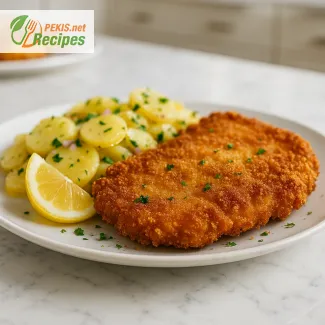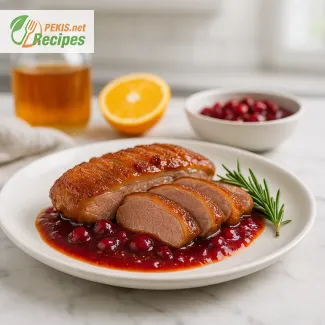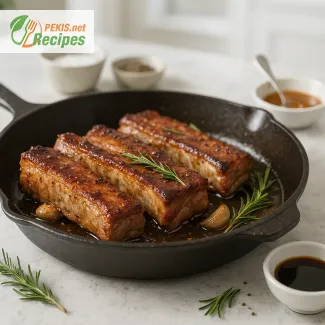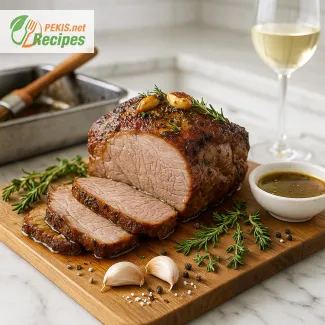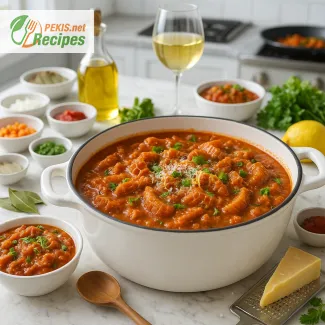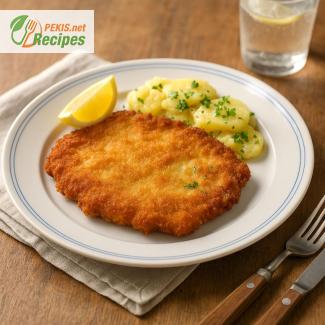
Discover the Authentic Taste of Austria with this Classic Schnitzel Delight
Why Wiener Schnitzel Remains a Timeless Culinary Favorite
Few dishes can evoke the comforting feeling of home-cooked European cuisine like a perfectly pan-fried Wiener Schnitzel. With its golden, crisp coating and juicy, tender interior, this iconic specialty from Austria has made its way into kitchens and hearts across the globe. Whether enjoyed in a bustling Viennese tavern or at a cozy family table, the traditional Wiener Schnitzel delivers pure satisfaction with every bite.
Wiener Schnitzel, literally translating to "Viennese cutlet," is one of Austria’s most recognized national dishes and a staple of Central European gastronomy. Traditionally prepared using thinly pounded veal cutlets, coated in fine breadcrumbs and gently fried to golden perfection, this dish is a true representation of how simple ingredients, when treated with respect and care, can yield extraordinary results.
The beauty of Wiener Schnitzel lies in its simplicity and elegance. There are no elaborate sauces, no overpowering spices—just quality meat, crisp coating, and a balance of texture that keeps it light yet indulgent. Its uncomplicated preparation has helped it transcend borders, with countless variations appearing in Germany, Switzerland, and Italy. But the original Austrian recipe, with its delicate veal cutlets and buttery breadcrumb crust, remains unmatched in flavor and finesse.
This classic dish is often accompanied by traditional sides such as potato salad, lingonberry jam, or a wedge of lemon that cuts through the richness with a splash of citrus. It’s a meal that brings people together—whether for a holiday gathering, a Sunday lunch, or a casual dinner during the week. There’s a reason this recipe has remained popular for generations: it’s reliable, full of flavor, and deeply rooted in cultural tradition.
Wiener Schnitzel isn’t just a recipe—it’s a story. It tells of culinary heritage passed down through time, of family traditions preserved on handwritten recipe cards, and of regional pride that still resonates today. The first documented reference to this dish appeared in the 19th century, and ever since, it has become a symbol of Austrian hospitality and European culinary excellence.
In today’s kitchens, this dish still holds the power to impress. It’s a perfect centerpiece for anyone who appreciates classic European flavors and a dish that champions simplicity, technique, and taste above all else. With just a few ingredients and a bit of patience, you can recreate an authentic Wiener Schnitzel at home and bring a taste of Vienna to your own dining table.
What makes this recipe especially appealing is its approachability. Even those new to cooking will find confidence in the step-by-step process, while seasoned home chefs will enjoy perfecting their frying technique to achieve the ideal balance of crunch and tenderness. No matter your skill level, this recipe invites you to participate in a time-honored tradition that continues to thrive both in Austria and around the world.
So whether you’re longing for a taste of your travels through Austria, looking to introduce a beloved European dish to your family, or simply in the mood for something timeless and comforting, this Traditional Wiener Schnitzel Recipe is the perfect place to begin. It’s more than just a meal—it’s an experience that connects generations, cultures, and flavor lovers alike.
In the sections that follow, we’ll guide you through the essential ingredients, detailed preparation steps, and insider tips to help you master the art of Wiener Schnitzel. Get ready to unlock the secrets behind one of Europe’s most cherished dishes, and prepare to be amazed by the results of this golden classic.
- Tenderize the veal: Place each veal cutlet between two sheets of plastic wrap and gently pound with a meat mallet until about 4–5 mm thick. This ensures even cooking and a tender texture.
- Season the cutlets: Lightly season both sides of the veal with salt and freshly ground black pepper.
- Prepare the breading station:
- Place the flour in one shallow dish.
- Beat the eggs in a second dish.
- Place the breadcrumbs in a third dish.
- Bread the veal cutlets:
- Dredge each cutlet in flour, shaking off the excess.
- Dip into the beaten eggs, allowing any excess to drip off.
- Press into the breadcrumbs, coating evenly without pressing too hard (the coating should remain light and airy).
- Fry the schnitzels:
- Heat a mixture of butter and vegetable oil in a large skillet over medium-high heat.
- Once the fat is hot and shimmering, carefully place 1–2 schnitzels into the pan at a time (do not overcrowd).
- Fry each side for about 2–3 minutes or until golden brown and crispy. Adjust heat if needed to prevent burning.
- Use a spoon to baste the schnitzel with the hot fat while frying to ensure even crispiness.
- Remove and drain on paper towels.
- Serve:
- Serve immediately while hot and crispy.
- Garnish with lemon wedges and fresh parsley if desired.
- Traditional sides include potato salad, cucumber salad, or lingonberry jam.
Mastering the Art of Schnitzel: Expert Tips to Elevate the Classic Dish
Enhancing Flavor, Texture, and Presentation in Your Wiener Schnitzel
The traditional Wiener Schnitzel recipe is a time-honored favorite, but even a well-loved classic can benefit from thoughtful improvements. Whether you're preparing it for a family gathering or looking to impress dinner guests, there are several ways to refine, adapt, and elevate the dish while preserving its iconic character. From ingredient swaps to advanced cooking techniques, every detail can contribute to a schnitzel that's not only delicious but also tailored to your tastes and dietary needs.
Choosing the Right Cut of Meat for Maximum Tenderness
While veal is the classic choice for Wiener Schnitzel, not all veal is created equal. Opt for top-round veal cutlets, which are lean yet tender and well-suited for pounding thin. When veal is unavailable or cost-prohibitive, pork loin offers a more affordable alternative with a similarly delicate texture when prepared properly. For a bolder, more robust flavor, some cooks choose chicken breast or turkey cutlets, though these leaner meats can require slightly more attention to moisture retention during frying.
Using organic or pasture-raised meat can enhance the flavor and ethical value of your schnitzel. These meats typically contain higher levels of omega-3 fatty acids, which not only contribute to heart health but can also subtly influence the taste of the dish with a richer, cleaner profile.
Upgrading the Breading for Texture and Flavor
Traditional schnitzel is breaded with plain white breadcrumbs, but you can introduce additional complexity with homemade or artisanal breadcrumbs made from day-old sourdough or rustic country loaves. These types of crumbs bring a more varied texture and a deeper, toasted flavor.
For an even crispier crust, try mixing in panko breadcrumbs, which are lighter and airier, helping to create a delicate crunch that holds up longer after frying. Adding finely grated Parmesan cheese or a touch of smoked paprika to the breadcrumb mix can also subtly enhance the flavor without straying too far from the original essence of the recipe.
Perfecting the Frying Technique
One of the most important steps in preparing Wiener Schnitzel is the frying process. The key is to shallow-fry the cutlets in a mix of butter and oil. The butter lends richness and browning, while the oil raises the smoke point, preventing burning. Maintain a consistent medium-high heat and always test the oil with a breadcrumb before adding the cutlets. If the breadcrumb sizzles and begins to brown in a few seconds, the temperature is right.
Avoid pressing down the schnitzel while frying—this traps steam and compromises the crust. Instead, allow the breading to puff up naturally, creating the signature “soufflé” effect that separates a good schnitzel from a great one.
Why Homemade Always Tastes Better
Preparing schnitzel at home allows for quality control at every step. You can select the best ingredients, avoid preservatives and additives, and tailor the breading and seasoning to your preference. Homemade schnitzel also avoids the sogginess or over-seasoning often found in restaurant or frozen versions, delivering a dish that's crisp, fresh, and perfectly balanced.
Common Mistakes to Avoid
- Using cold meat: Always allow the cutlets to come to room temperature before cooking to ensure even frying.
- Overbreading or compressing the coating: This results in a dense crust that doesn’t puff. Lightly press the breadcrumbs and shake off the excess.
- Frying at too low a temperature: This causes the schnitzel to absorb oil and become greasy.
- Crowding the pan: Fry in batches to maintain oil temperature and crispiness.
Healthier Alternatives Without Sacrificing Flavor
For a lighter version, consider baking the schnitzel instead of frying. Spray the breaded cutlets with olive oil and bake in a preheated oven at 200°C (400°F) for 15–18 minutes, flipping once halfway through. The result is still crispy and golden but with significantly less fat.
To reduce saturated fats, swap butter for avocado oil or sunflower oil, both of which offer a high smoke point and a mild flavor. For gluten-intolerant diners, use gluten-free flour and breadcrumbs made from rice or corn. For an egg-free version, a mixture of plant-based milk and cornstarch can effectively bind the coating.
Vegetarians can even try a schnitzel made with thinly sliced celeriac, eggplant, or zucchini, breaded and fried in the same way. These versions offer a unique twist while maintaining the core appeal of the dish.
Pairing Suggestions That Complement the Dish
A well-balanced side enhances the overall experience. While potato salad is the classic partner, consider variations such as:
- Cucumber salad with dill and vinegar, which offers freshness and acidity
- Warm herbed lentils with mustard vinaigrette for a protein-rich twist
- Caraway-roasted root vegetables, adding earthy sweetness to contrast the crisp schnitzel
Garnishes and Finishing Touches
Never underestimate the power of a simple lemon wedge—its acidity balances the rich crust and lifts the dish. Fresh herbs like parsley, chives, or tarragon can be added just before serving for a burst of color and aroma. For a modern flourish, a drizzle of brown butter with capers introduces depth without overshadowing the delicate schnitzel flavor.
By understanding the nuances of this iconic dish, experimenting with ingredients, and avoiding common pitfalls, home cooks can transform a traditional schnitzel into a personalized culinary masterpiece that reflects their own tastes and values—while still honoring the dish’s proud Austrian heritage.
- Eggs
- Gluten (wheat flour, breadcrumbs)
Substitution tips to avoid allergens:
- For gluten-free version: Use certified gluten-free flour and breadcrumbs.
- For egg allergy: Replace eggs with a mixture of plant-based milk (50 ml / 3 tbsp) and cornstarch (15 g / 1 tbsp).
- Vitamin B12: 1.8 µg – supports red blood cell formation and neurological health
- Iron: 2.9 mg – essential for oxygen transport in the blood
- Zinc: 3.2 mg – strengthens immune system and supports wound healing
- Vitamin B6: 0.7 mg – aids in metabolism and brain function
- Phosphorus: 280 mg – important for bone strength and energy metabolism
- Selenium: 28 µg – protects cells from oxidative stress and supports immune function
- Vitamin E: 2.4 mg – helps maintain healthy skin and eyes, protects cells from damage
